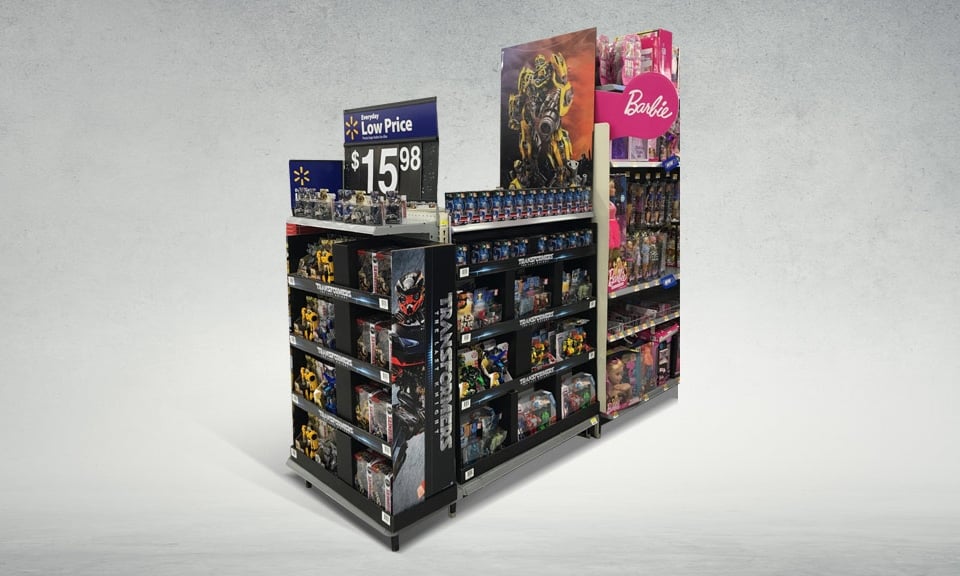A planogram is a way to arrange products so they'll catch the eye of the consumer and inspire them to take a look. They've proven to be an effective way to inspire more sales and drive brand loyalty. Here’s how planograms are used and what Bay Cities can do to help you through the development and design process.
What Is a Planogram?
A planogram defines everything from how products should be placed to how many of them should be used. They take into account the volume of shelf space, whether other products will be displayed in the same location, and if the retail establishment is likely to run out of stock.
So if a retailer is dealing with a very limited amount of space for their products, they might opt for a variety of products to give customers more choices in a smaller space or they might concentrate the products as a way to maximize their visual impact.
Planograms are used across a variety of industries, including apparel, food, and quick-sale consumer goods (e.g., toiletries, over-the-counter medications, etc.). Manufacturers will often send these planograms along with new shipments. This makes it possible for different branches of an establishment to have the same stock set-up, even when the overall layout of each store is different.
How Are Planograms Designed?
When constructing a planogram, the designer takes into account both the product in question and how it relates to other products on the market. For example, whether jars of peanut butter might look better if they were positioned next to jars of jelly. And if so, should the jars be placed side by side or should they alternate to provide an interesting color contrast?
Supermarkets will often use a box-based planogram in order to drive as much inventory turnover, which in turn boosts profit margins. If it's an apparel company, the retailer will use a pictorial planogram that shows exactly how each product should be displayed for maximum effect.
Common Types of Placements
Where products are placed depends on a variety of factors. From the type of good to the eye-level at which it's seen, a planogram is meant to address a wide variety of buyer patterns. We'll look at the three main types of methods used.
Commercial
The commercial strategy depends on both market share and margins of a particular product. If a product has a high profit margin, it's often placed at the front of a store for maximum impact on the customer. A person entering a retail establishment might immediately be drawn to the item, deciding to buy it long before decision fatigue has a chance to set in by the end of the trip.
Many companies will rely on market share research companies to determine which items should be given the spotlight. A commercial planogram will tell the constructor how to utilize space, whether the retailer should be prominently identified, and how much inventory should be placed in the display. As with any display, shelves need to be well-organized and appealing to the customer to ensure both interest and satisfaction in shopping.
Visual
This strategy relies on how the customer views different products. It takes into account how the eye is drawn from different locations in the store. For example, will a customer be more inspired to check out a display if they're standing in the middle of Aisle 10 or when viewing it from the back of the store? How will the products placed at their eye-level affect their shopping habits?
When it comes to visual product placement, products can be placed vertically, horizontally, or in blocks. If they're being placed vertically, they're usually placed anywhere between 6" – 12" apart on different shelves. The customer is usually looking at a display the same way they would read a page, moving left to right to quickly scan what's on offer.
Visual planograms also take into account the price of each item. A discount retailer may have a completely different structure than a luxury retailer. These displays send subtle messages about the quality of the products being offered and the overall values of the retailer.
Creation
A creation planogram is one that uses a specialized software program to determine where to place certain items to optimize the supply chain. This might involve rearranging shelving, altering the language of the display, the price of each item, or the strategy of the campaign. For example, a creation planogram might suggest to a store that they're better off targeting kids in certain store locations for back-to-school shopping than their parents.
How Bay Cities Uses Planograms
Bay Cities uses planograms throughout the design and development process because they've been proven to work. Consumers make decisions based on a wide variety of factors, many of which they aren't even aware of. The purpose of the planogram isn't to trick shoppers, but to get your brand in a position where it will have the best chance of being utilized.
Bay Cities also takes into consideration the weight, size, and quantity of desired products to build the structure of a display. Heavier items should ship on the bottom of a display to minimize stress on corrugated shelves. Protective materials or corrugated dividers are added to fragile items like glass or liquids to keep them safe in transit.
Whether it's a new product or a new company, building loyalty starts with people trying what you have to offer. If you can make an impression on customers, whether it's with the help of bright colors or clever messaging, they'll be more likely to wander over and spend a little time familiarizing themselves with your shelves. Let us help you create a connection with the right display.



/BC_Logo2_White.png?width=300&height=83&name=BC_Logo2_White.png)